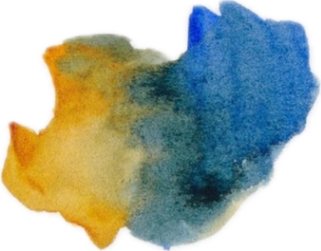My keepers
Among the oldest items in my wardrobe are two simple button-down white linen shirts. I wear them every single summer, at the office, at home, and on the go.
I bought them over a decade ago when I needed a clean space for my mind to breathe. It was a hot summer, and I had been juggling between hospital and office exhaustedly for months. The crystal white color calmed me down, while the breathable linen material kept me cool.
I brought these two shirts along during a 2-week trip to Portugal in the summer of 2015. A friend with two large suitcases was shocked to find me with just a carry-on, asking, 'Don’t you have enough clothes to change?' I did change every day, alternating between these two shirts. With a drop of body wash and line drying, I hand-washed the shirts every night. By the next morning, they were dry and smelled fresh. My friend was amused by my creative way of traveling light.
These shirts are incredibly comfy and get softer with every wash. I avoid using detergent, bleach, and fabric softeners because residues from these additives could make the linen stiff.
I am wearing the same white linen shirt while writing this post, I hope that with proper care, they will be with me for another decade or two.
A rare fiber
Linen is a unique textile material made from fibers extracted from the stems of flax plants, known as linen flax. Flax is a hardy plant with blue flowers.
There are two types of flax fibers: long fibers for non-industrial use (such as fashion and bedding) and short fibers mainly for industrial purposes.
Why did flax fibers account for less than 0.5% of global fiber production in 2023? The process of extracting flax fibers from the plant is more labor-intensive and time-consuming compared to other fibers like cotton or synthetics. Flax thrives in temperate climates. Currently, 75% of long fibers are produced in France, Belgium, and the Netherlands.
Super natural material
Linen boasts superior properties compared to other fibers.
It's incredibly durable, enduring frequent washing and wear without losing its strength.
New linen feels stiff due to pectin, a natural binding agent found in the plant. With wear and washing, the pectin gradually diminishes, resulting in a softer and smoother texture while enhancing its natural luster over time.
Linen is breathable because its fibers have hollow cores, allowing for efficient moisture and thermal regulation. This keeps the wearer cool and dry in warm weather.
Linen stands out as a more sustainable and environmentally friendly choice compared to other fabrics. It's similar to organic cotton because it minimizes the use of pesticides and chemicals in cultivation and extraction.
Rich history
Linen is the oldest textile in the world, with the use of flax as a textile dating back to 36,000 BCE. The cultivation of flax for linen production began at least 10,000 years ago, making it as one of the earliest domesticated plants.
Ancient Egyptians prized linen for its versatility, using it as a symbol of purity and wealth. Linen cloth was often used to wrap famous Egyptian mummies.
Alexander the Great and his soldiers protected themselves with linothorax armor made of 15-20 layers of linen soaked in flaxseed oil, which hardened through air oxidation.
Elizabeth II wore a simple white linen dress when she was crowned Queen of the United Kingdom in 1953.
Federal Reserve notes are composed of a blend of 25% linen and 75% cotton.
Reference:
Textile Exchange, Material report 2023






I remember the light luggage part when we chatted about the past. You bring back the valuable memory of those old days and naturally introduce the plant used for fabrics of clothing. I like the way you connect your personal story (consumer side) to the root of history for materials making clothes(manufacture side). It has some sentimental part and some facts which are informative. I enjoy reading your writing. Clear minded and have some good points. It’s good to have references information in appendix. Well done.👍
I have a couple shirts that I wear almost every week for probably 25 years. They’re not gonna last much longer. I keep thinking. They are cotton, but I love linen and I had no idea of flax flower was what they made linen from. It’s so fun to learn.